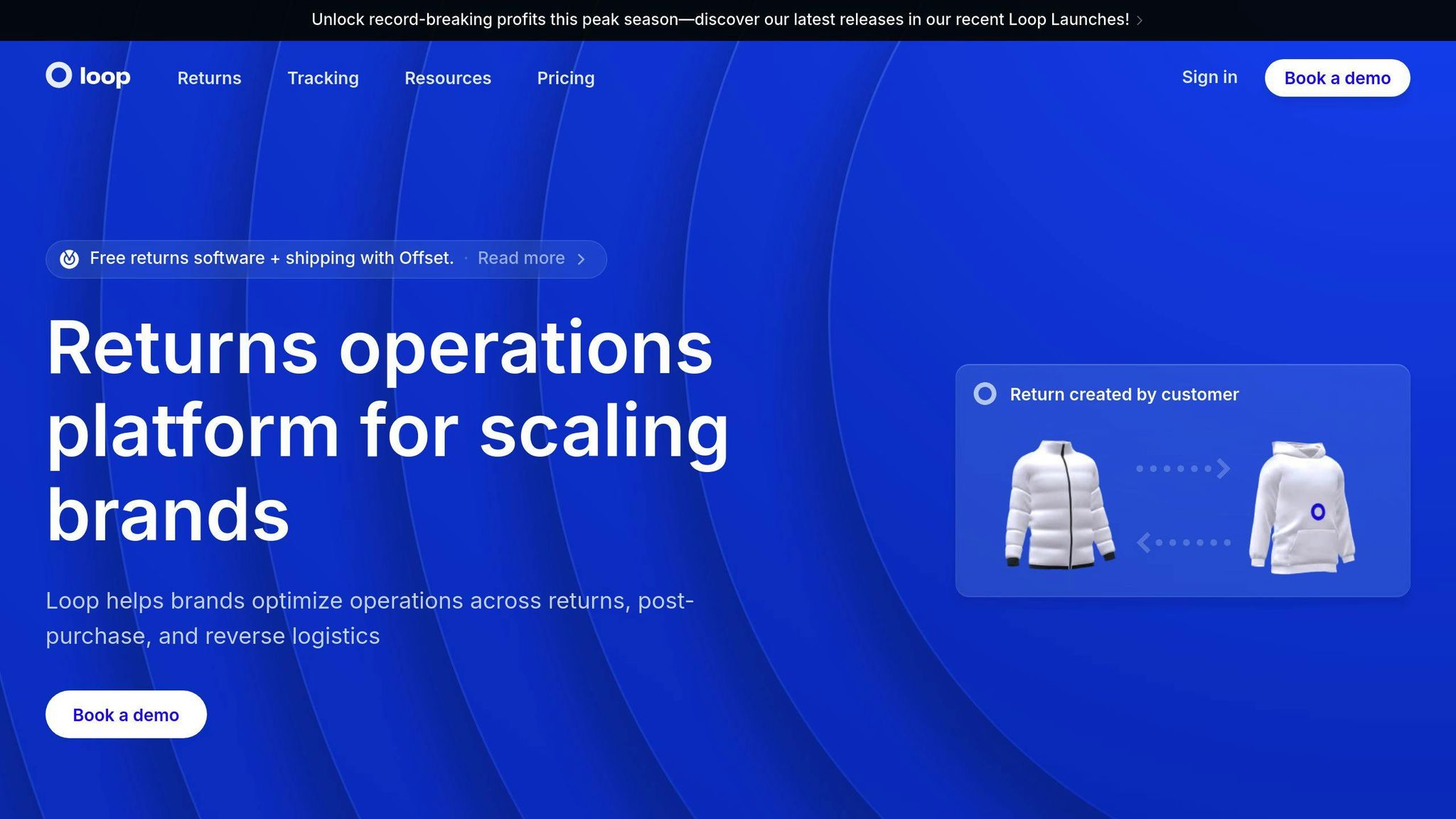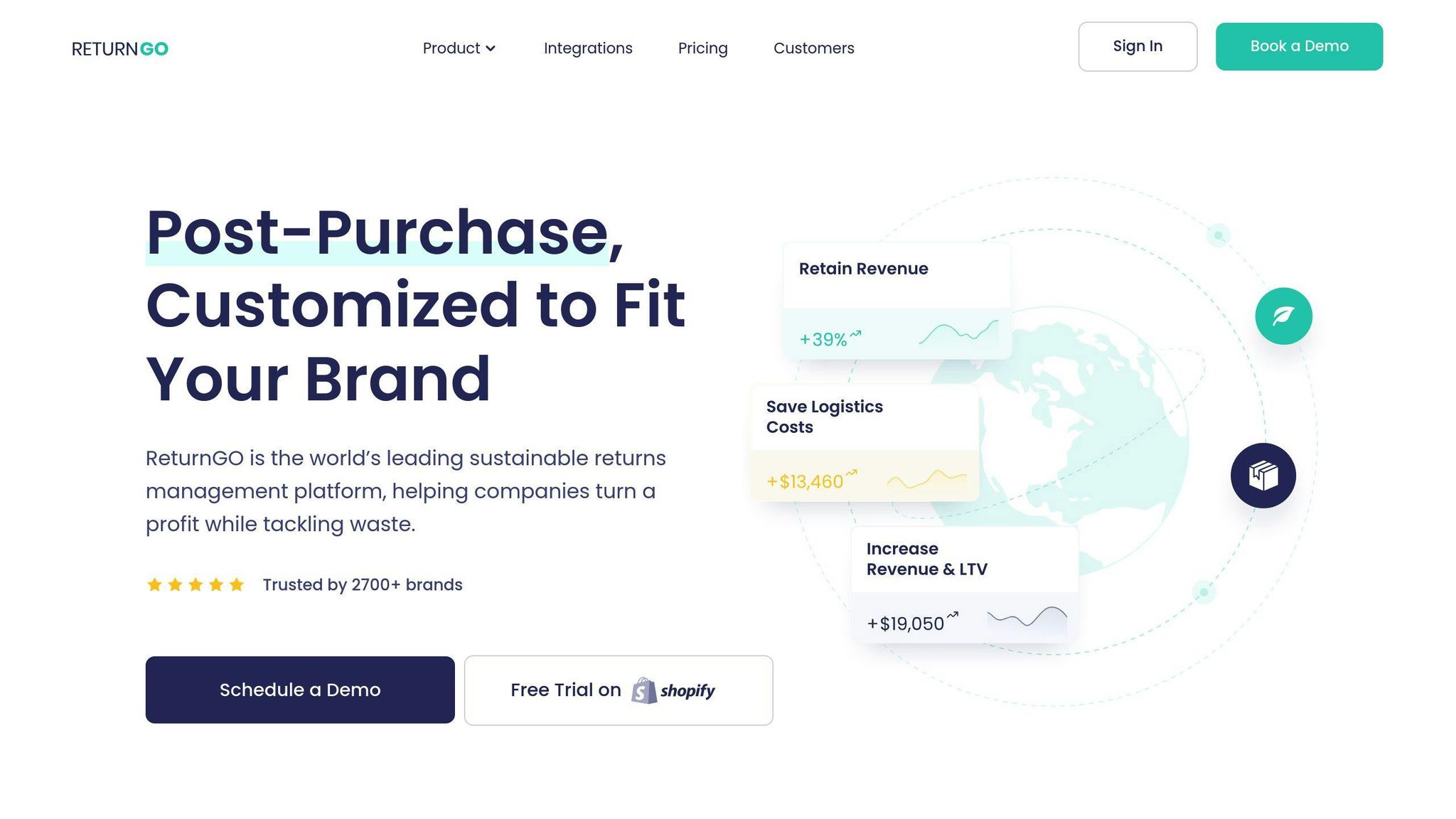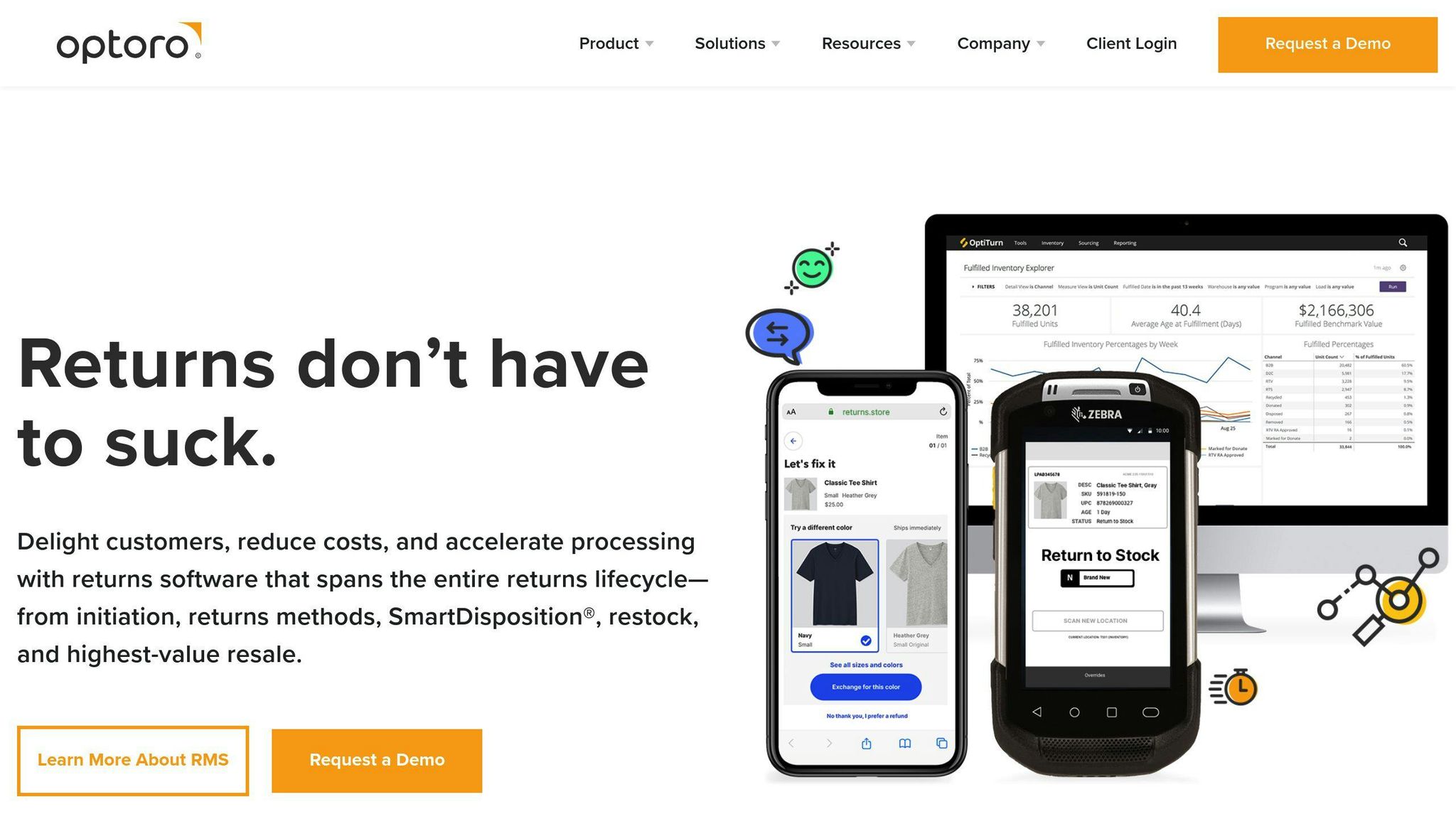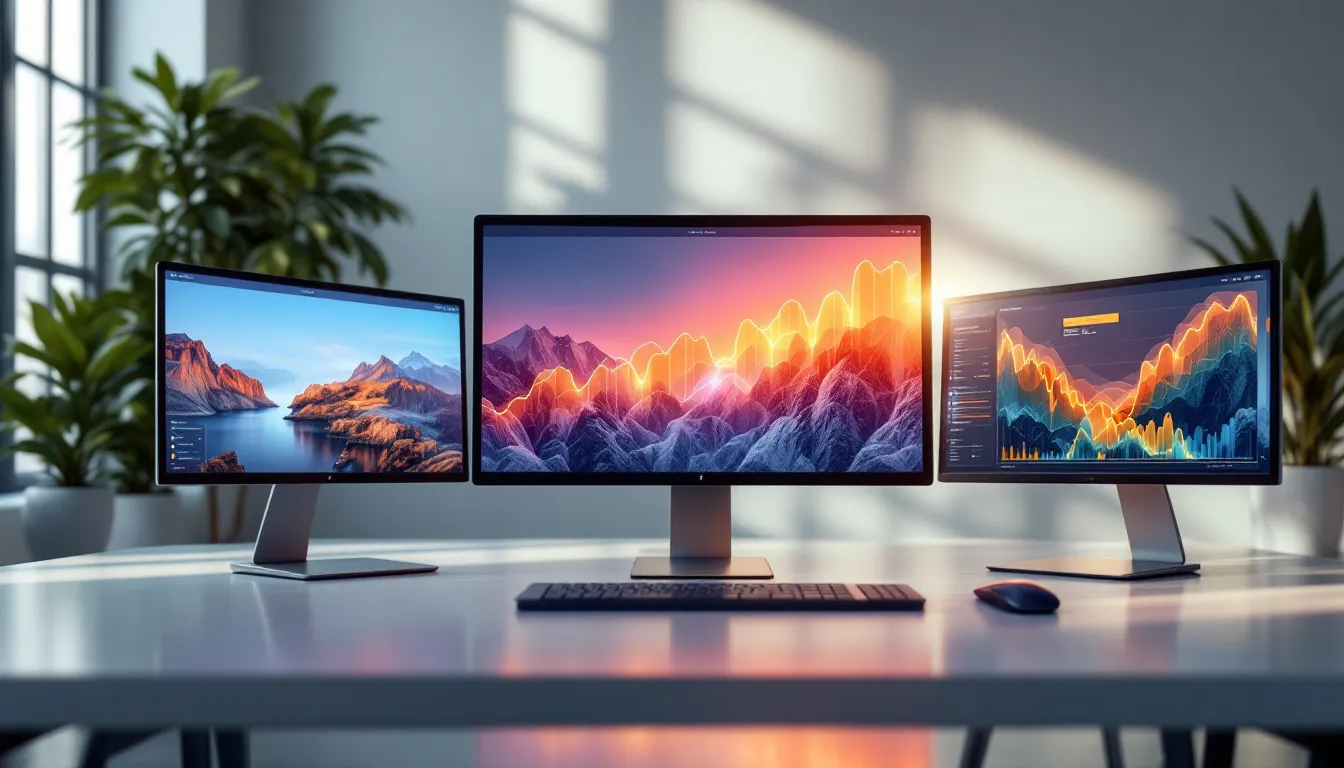for E-commerce
Online shopping is booming, but so are product returns. This creates waste and pollution. Here's how to make returns more sustainable:
- Use smart return management systems
- Consolidate shipments to reduce packaging and emissions
- Optimize shipping routes to cut fuel use
- Offer local return options to minimize transport
- Use data to identify and fix common return reasons
Top tools reshaping sustainable returns:
- Loop Returns - Offers refunds without physical returns
- ReturnGO - Focuses on eco-friendly shipping methods
- ReverseLogix - Uses data to improve return processes
- Optoro - Maximizes value recovery from returned items
Key features to look for:
- Shipment consolidation
- Route optimization
- Integration with existing systems
- Data analytics for insights
By implementing these tools and strategies, e-commerce businesses can reduce their environmental impact while improving efficiency and customer satisfaction.
Related video from YouTube
Top Returns Management Tools
E-commerce businesses need to handle returns efficiently and sustainably. Let's look at some tools that are shaking up the returns process, making it greener and more cost-effective.
Loop Returns: Smart Return Options

Loop Returns is changing the game. How? By offering refunds without physical returns. This cuts down on unnecessary shipping and its environmental impact.
A high-end fashion retailer using Loop Returns saw their returns processing time drop by 93%. That's not just a time-saver - it's a big win for reducing carbon footprints.
When returns are necessary, Loop optimizes shipping routes. They consolidate shipments and find the most efficient paths. The result? Less fuel used and fewer emissions.
ReturnGO: Green Shipping Methods

ReturnGO's focus? Making unavoidable returns as eco-friendly as possible. Their platform pushes for green shipping methods to minimize environmental impact.
One of ReturnGO's cool features is consolidating multiple returns into single shipments. This can seriously cut down on packaging waste and transportation emissions.
ReturnGO also helps retailers choose local return centers. This means less long-distance shipping, which is good news for both the environment and customers who want speedy returns.
ReverseLogix: Using Data to Improve Returns

ReverseLogix is all about using data to make returns better. They offer a self-service returns portal that plays nice with existing systems.
By looking at return patterns, ReverseLogix helps businesses spot products with high return rates. This lets companies tackle issues head-on, potentially cutting down future returns.
Here's an example: If data shows a clothing item is often returned due to size issues, the retailer can update their size guide. Simple fix, big impact.
Optoro: Getting More Value from Returns

Optoro's specialty? Squeezing more value out of returned items. Their Returns Management System uses a fancy SmartDisposition® data engine to send returned items where they'll make the most money.
Check out these results:
- A global footwear brand boosted recovery by 45% for previously recycled inventory.
- A maternity retailer saw a 37% increase in average order value by pushing exchanges over returns.
Natalie Walkley, Optoro's VP of Marketing, puts it this way:
"Returns can have a significant impact on their environment. With inefficient returns processes, not only does more product end up in landfills, but there are more carbon emissions from double-transportation costs."
Optoro's approach helps cut waste and boost profits at the same time. Not bad, right?
These tools show that with the right tech, returns management can be good for both the planet and the bottom line. By cutting unnecessary shipping, optimizing routes, using data smartly, and getting the most out of returned items, retailers can shrink their environmental footprint while padding their profits.
Key Features for Better Returns
Let's dive into two game-changing tech features that make returns more eco-friendly: combining shipments and optimizing routes.
Combining Returns Shipments
Grouping multiple returns into one shipment? That's returns consolidation. And it's a big deal. Here's why:
- It slashes packaging waste
- It puts fewer trucks on the road
- It can cut transportation and handling costs by up to 40%
ReturnGO, a sustainable returns platform, is crushing it with this approach. Felix Lesho, Co-Founder and CXO of Underoutfit, says:
"ReturnGO reduced our number of returns by more than 25% by making users smartly choose credits over refunds using different item and logistic scenarios."
So, not only does it cut down on returns, but it also nudges customers towards greener choices.
Better Shipping Routes
Smart shipping planning is all about minimizing delivery distances and fuel use. Here's the lowdown:
- Use software to plan the most efficient routes
- Make sure trucks are full in both directions
- Process returns at nearby locations
Penske Logistics is leading the charge here. Amy Ilyes, their VP of Logistics Engineering, breaks it down:
"We have a simulation of the events that occur on the route, and we know when we need to make the deliveries and where the slack time in the route occurs. It is a puzzle."
The results? They're pretty mind-blowing:
- Save up to 20 million empty truck trips each year
- Cut 3 billion truck miles
- Use 923 million fewer gallons of diesel
It's a win-win: good for the planet and great for the bottom line.
Want to get in on this? Here's what to do:
- Start consolidating returns to optimize transit loads
- Use transportation management software to find the best routes
- Consider wider delivery time windows for more efficient routes
- Team up with 3PL providers who know sustainable returns management inside out
How to Pick the Right Returns System
Choosing a returns management system (RMS) can make or break your e-commerce business. Let's look at what matters when picking an RMS that fits your sustainability goals.
Reducing Impact
When shopping for an RMS, zero in on features that cut waste and emissions:
Consolidation capabilities: Find systems that bundle multiple returns into one shipment. This cuts packaging waste and transport emissions. ReturnGO does this, helping some retailers slash returns by over 25%.
Smart disposition: Go for an RMS that quickly decides what to do with returned items. Optoro's system uses a fancy SmartDisposition® engine to route items efficiently. One big shoe brand using it boosted recovery of previously recycled inventory by 45%.
Local return options: Systems with local drop-offs can really cut shipping distances. Look for Return on Behalf of (RoBo) features. These let customers return items locally instead of shipping them back to a far-off warehouse.
Working with Other Systems
Your RMS can't be a lone wolf. It needs to play well with your other tech:
Integration capabilities: Make sure the RMS connects smoothly with your e-commerce platform, inventory system, and CRM tools. This keeps inventory accurate and customers happy.
Data analytics: Pick systems with solid reporting. ReverseLogix, for example, shows which products get returned a lot. This helps you fix problems before they blow up.
Customizable workflows: Your business is unique. Your RMS should flex to fit your needs, including your green initiatives.
Don't just look at features when sizing up systems. Check out real results:
A maternity retailer using Optoro's system saw a 37% jump in average order value by pushing exchanges over returns.
Penske Logistics, using smart route planning, could save up to 20 million empty truck trips each year. That's 3 billion fewer truck miles and 923 million gallons of diesel saved.
sbb-itb-d1a6c90
Setting Up Your Returns System
A good returns system balances sustainability with customer happiness. Here's how to set one up:
Choosing Your Platform
Pick a returns management system (RMS) that fits your green goals:
1. Bundling returns
Look for systems that can pack multiple returns into one shipment. ReturnGO's platform has helped some stores cut returns by over 25% by pushing store credit over refunds.
2. Smart routing
Go for an RMS with smart routing. Optoro's SmartDisposition® engine helped a big shoe brand boost recovery of recycled inventory by 45%.
3. Local returns
Pick systems with Return on Behalf of (RoBo) features. These let customers return items locally, cutting shipping distances and emissions.
4. Plays well with others
Make sure the RMS connects smoothly with your online store, inventory system, and customer tools. This keeps your inventory accurate and customers happy.
5. Number crunching
Choose a system with good reporting. ReverseLogix, for example, shows which products get returned often, so you can fix issues early.
Tracking Results
Keep an eye on how your returns system is doing to save money and cut waste:
1. Set clear goals
Make specific, measurable targets for your green efforts. Like cutting return-related carbon emissions by X% in Y months.
2. Watch return rates
Figure out your returns rate: divide returned items by shipped items, then multiply by 100. Track this over time to see how your return policy and product quality are doing.
3. Why are things coming back?
Use your RMS to group and track return reasons. This info can help you spot and fix issues with product descriptions, sizing, or quality.
4. How efficient is shipping?
Track things like how many returns you bundle and average shipping distances. Penske Logistics uses smart routing to potentially save up to 20 million empty truck trips each year.
5. How much are you saving from the landfill?
Keep tabs on the percentage of returned items you fix up, resell, or recycle. This shows how well you're cutting down on waste.
6. Are customers happy?
Keep returns simple and ask customers how it went afterward. This can give you great ideas on how to improve.
Checking Your System's Success
After setting up your returns management system, you need to keep an eye on how it's doing. This helps you see if it's actually saving you money and helping the environment.
Measuring Savings and Impact
Here's what to look at:
Return Rate: This is the percentage of items that come back. Just divide returned items by shipped items and multiply by 100. The average for online stores is 19%. If yours is way higher, something might be off with your products or descriptions.
Cost Per Return: This covers everything from picking up the item to restocking it. Keep track of this to see how it affects your bottom line.
Environmental Impact: Look at how far returned items travel. Smart routing can make a big difference. For example, Penske Logistics found a way to potentially cut out 20 million empty truck trips each year. That's 3 billion fewer miles and 923 million gallons of diesel saved.
Value Recovery: Track how many returned items you can resell, fix up, or recycle. One footwear brand boosted their recovery of recycled inventory by 45% with a new system.
Customer Satisfaction: Ask customers what they think after they return something. It can give you good ideas for improvement. Remember, 66% of people check return policies before buying.
Refund vs. Exchange Ratio: Keep an eye on how many people want refunds versus exchanges. As Carly Greenberg says:
"These metrics demonstrate how paying attention to the right KPIs can significantly improve your approach to returns."
If you can get more people to exchange instead of refund, it can make a big difference. For example, if you have 10,000 returns a year and can drop your refund rate from 80% to 60%, you could keep an extra $200,000 in revenue.
Cycle Time: See how fast you process returns. Quicker is usually better for both you and your customers. Some systems can track every step from when an item comes back to when it goes out again.
By keeping track of all this stuff, you can spot where to make things better and show how well your sustainability efforts are working. As the ReturnGO team says:
"You can't improve what you don't measure."
Use what you learn to make your returns process better, keeping customers happy while also being good for the environment and your wallet.
What's Next for Returns Management
The future of returns management is getting smarter, greener, and more customer-friendly. As online shopping keeps growing, stores are using new tech and ideas to handle more returns without breaking the bank.
AI: The New Brain of Returns
AI is changing the game for returns. It's helping stores:
- Figure out the best way to send returns back
- Keep track of products better
- Guess how many returns they'll get
- Come up with better return policies
For example, they're using fancy math (graph theory) to find the cheapest ways to move returns around. This could save millions and cut down on pollution.
"Keep It" Returns: A Win-Win
Here's a cool new trend: some stores are telling customers, "Keep the item, we'll still give you your money back." This works for certain products and customers. It's a big deal because:
- It can cut shipping costs by up to 15%
- For every 100,000 items not shipped back, it saves 110,000 lbs of CO2
Customers love it because it's super easy, and stores save money.
Robots and Automation: The New Workforce
More and more stores are using software and robots to handle returns. In fact, 80% of companies are either using or planning to use these tools. They're investing in systems that use AI to make the whole return process smoother.
Going Green with Returns
Stores are thinking about the planet, too. They're trying things like:
- Boxes you can use again and again
- Better recycling
- Finding new uses for returned stuff
As the folks at Optoro say, "AI is always getting better, and returns are following along." This means tech is helping make returns better for the environment.
Using Data to Get Smarter
Stores are getting really good at using data to understand returns. They're looking at things like how many returned items they can resell or donate. This helps them make better decisions about what to stock and how to handle returns.
Returns Your Way
Returns are getting personal. 80% of customers are more likely to buy when they get a personalized experience. So, stores are making return processes that fit each customer. Plus, 81% of customers want to handle returns themselves, so self-service options are becoming the norm.
Fighting Return Fraud
Return fraud is a big problem - it's up to 13.7% of returns in 2023. Stores are using smart AI systems to spot fake returns and save billions.
Try Before You Buy (Kind Of)
Looking ahead, augmented reality (AR) might be a game-changer. Imagine "trying on" clothes virtually before you buy them. This could really cut down on returns, especially for clothes where return rates can be as high as 30% to 40%.
Aviad Raz, who runs ReturnGO, says: "Making returns automatic is the future of online shopping. At ReturnGO, we're all about finding new ways to make returns easier and help businesses stay ahead."
The future of returns isn't just about processing them faster. It's about finding a balance between saving money, making customers happy, and taking care of the environment. Stores that can do this well are going to be the ones that come out on top.
FAQs
How can reverse logistics supply chains be more sustainable?
Reverse logistics is key to making supply chains greener. Here's how:
Refurbish and resell: Collect used products that still work, fix them up, and sell them again. This cuts down on making new stuff and helps the environment.
Cut landfill waste: Did you know that 9.5 billion pounds of returned products end up in landfills every year? Good reverse logistics can slash this number.
Lower carbon emissions: E-commerce returns pump out 24 million metric tons of CO2 yearly. That's like 5.1 million cars on the road! Better reverse logistics can help cut this down.
Go circular: Gaurav Saran, who started ReverseLogix, puts it this way:
"Reverse logistics lets us collect used products that still work. We can fix them up and sell them again. This means we don't need to make as many new things, which is better for the environment."
How to make it happen:
Give customers clear info about products to cut down on returns. Offer small discounts if they keep items they might return. When stuff does come back, try to resell, donate, or recycle it first.


